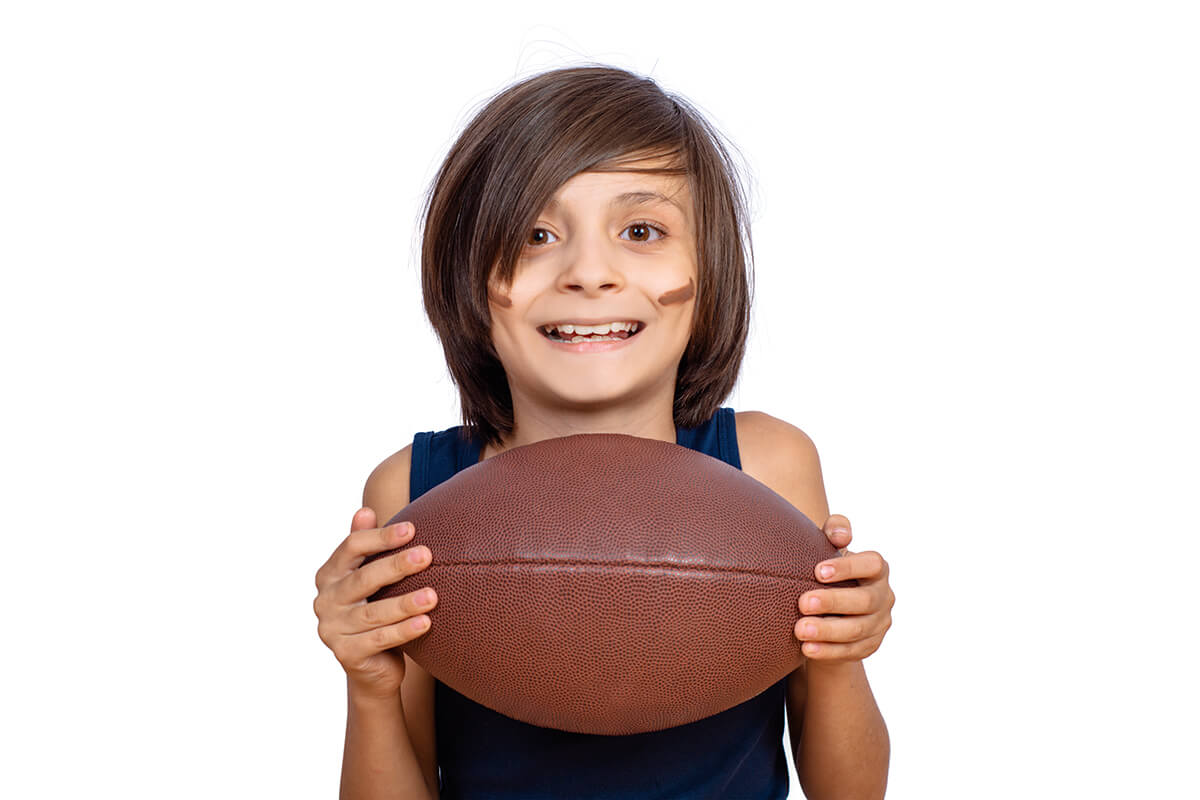How to Involve Your Child in the Game-Time Experience
For many Americans, the end of summer, back-to-school and changing of seasons means only one thing: football is here! Whether NFL, college, high school or youth games, or even Fantasy Football, the love of the sport is real. Unfortunately for many autism parents and siblings, enjoying a game in an alma mater’s stadium or under the Friday night lights with their children is a dream they have given up on experiencing. Loud whistles, marching bands, cheerleaders, bright lights and crowds are often times overwhelming for those with autism spectrum disorder (ASD), and can be especially scary for those with elopement challenges.
We aim to fix that! If the gridiron is an important staple in your life, our Hopebridge team came up with five ways to include your kiddos and make football a “touchdown” for the entire family.
How to Engage Kids with Autism in Football
- Talk about the game and your favorite teams.
As with most of our advice, getting your child acclimated with something almost always begins with communication and connecting with them on their level. Even if a child is non-verbal, talking to them about sports, your favorite teams and what they mean to you can make an impact. Share photos of players on the field and you at games. Play with football figurines or mascot stuffed animals. Watch videos of special plays and endzone dances. Show them football jerseys, logos and gear. Read a book about football, like Sports Illustrated’s My First Book of Football: A Rookie Book or There Once Was a Buckeye Who Lived in a Shoe. By talking about the sights, sounds and stories of football, you can help open a new world for them and possibly find a new way to engage.
- Prepare to cheer on a youth or high school team.
If siblings are involved in sports, choosing whether to attend a game can be a difficult decision, but there are a few things you can do to make sitting in the stands a little easier. Plus, going to a high school game or local field might be a good stepping stone to lead to the “big game,” because it is often easier to back away or find a quiet space should it become too much. You can create a social story or schedule to prepare your child for the day’s activities. Bring along a “game day kit” with items such as noise-cancelling headphones, sunglasses or hat, a weighted blanket, seat cushion and desired activities or reinforcers. Scope out your chosen seats early and once there, step away from the excitement, as needed. You could also work with the local team, arranging to watch a practice or scrimmage before heading to the big game. It’s likely there will be fewer people in the stands and these are often at an earlier time in the evening. This may be a great pitstop on the way to the main event.
- Seek out autism-friendly sporting events at pro and college stadiums.
While inclusivity still has a long way to go, some stadiums are are extending extra care to the autism community. For instance, the home of the Indianapolis Colts, Lucas Oil Stadium, has been known to offer headphones and weighted blankets to help fans with autism deal with the sensory overload that often accompanies a noisy football game. Plus, there are picture menus at all permanent food counters for an extra guide. There are also dedicated autism awareness game days at some stadiums. These sporting events often include special group seating and sensory-friendly breakout rooms for those who need a quiet space. Don’t live in an area with accessible stadiums? If you’re still interested in trying it out, pack a game day kit like the one you would bring to a smaller game. You should also research food options in advance and find the booths that offer something your child likes, or call ahead for approval to bring in some of his or her preferred snacks.

How to engage kids on the autism spectrum in football
- Watch from the comfort of your living room.
If going out to watch a game may be too stimulating, create your own mini watch party at home with the people closest to your kiddo. Buy your child a jersey or a simple, comfortable t-shirt in the team’s colors to get in the spirit. Have some of his or her favorite snacks on hand to complete the “party” and turn on the game. Explain what is happening and encourage cheering when your team scores. If he or she wants to step away from the game, that’s ok too, but the more you can involve your kid and his or her interests from the start, the more likely it will be a good experience.
- Toss a ball around at home.
Start small! You do not need to make a big commotion around football to make it fun for your kid. Throw the ball back and forth – even with the little ones – to introduce the game. Playing sports can benefit the body and brain, plus it’s a great way to engage in an activity together. Just by throwing around a ball and chasing after each other, you are helping to build motor skills and flexibility, improve focus and hand-eye coordination, and boost confidence and social skills.
No matter which route you choose, know your child’s limits. Take it little by little and do not spend too long watching or engaging in a game. Give them space when they need it and encourage them to rejoin at another time, if it makes sense. The fun may not be instantaneous, but just because one avenue may not work at first, does not mean you cannot find another way to get them involved.
If attending a football game or another similar activity is on your mind, mention it to your child’s BCBA so they can work on building the appropriate skills and tolerance in ABA therapy. If you need help finding a therapist, reach out to us at Hopebridge so we can connect you with an experienced therapy team in your area to work on goals like this together.

